33 herbal products you can make at home

Making your own herbal products for healing and a healthy glow.
There are many ways to get the healing properties of medicinal plants into our bodies. The easiest way is with herbal teas, but other herbal products are sometimes better. It depends on what you are treating, and what ingredients you have on hand.
33 ways to get the healing benefits of herbs into the body
- Medicinal teas - quick and easy, just steep your herb for 15 minutes.
- Infusions - include herbal vinegars, wines, oils, etc.
- Decoctions - like a tea but with roots, bark, dried berries - simmer for 5 minutes or more, then steep 30 minutes.
- Herbal tinctures - extraction of herbal properties into vodka or other bonded liquor - tinctures keep for 3 years or more.
- Infused oils - herbal properties extracted into oils - cold-pressed olive oil works great.
- Infused wine - herbal properties extracted into wine
- Infused vinegars - herbal properties extracted into vinegar
- Syrups - a strong infusion sweetened with honey or sugar
- Poultices - cooked or mashed herbs used externally for skin problems and shallow wounds
- Plasters - a cloth is plastered with honey and powdered herbs, then applied to the body.
- Compresses - cloth soaked in hot tea and applied externally
- Masks - herbal treatments usually applied to the face and neck
- Ointments - thick salve for external use, usually made with beeswax
- Herbal creams - oils and water combined with an emulsifier and herbal extracts or essential oils
- Lotions - thinner than cream, with more water and less oil
- Liniments - like a lotion or infusion but for external use only - usually made with rubbing alcohol which should never be taken internally
- Herbal baths - a bath with herbal oils, teas, or essential oils
- Salt scrubs - salt with herbal oils used to remove dead skin cells
- Capsules - powdered herbs inside a capsule for taking internally
- Tablets - powdered herbs made into tablets for taking internally
- Powders - dried herbs crushed into a powder, added herbal products and foods
- Inhalants - finely powdered herbs or roots for snorting up the nose or smoking - such as smoking mullein leaf to loosen phlegm
- Lozenges - herbs with added sugar, honey, or syrup, and formed into round discs for treating sore throat, etc.
- Enemas - herbal tea or decoction delivered into the body via the rectum.
- Suppositories - solid, waxy bullet shaped herbal "pill" that is inserted into the rectum.
- Sprays - Any herbal tea or decoction that is sprayed such as sore throat sprays and refreshing facial-toner sprays
- Packs - herbs used for deeper wounds and nose bleeds or placed into the vagina (never try to treat a deep wound at home unless in emergency situations! Seek emergency help as soon as possible). During war time, soldiers packed wounds with yarrow to stop bleeding and the practice saved many lives.
- Astringents - usually a blend of herbal extracts, essential oils, and alcohol, used externally for tightening the pores and shrinking tissue
- Gargles - herbal teas used as a gargle and then spit out
- Washes - herbal teas used on rashes and larger areas of skin
- Drops - herbal tinctures taken by mouth with a dropper
- Rinses - herbal teas usually used on the hair after a shampoo or on a skin rash
- Essential oils - the essence of a herb, essential oils are powerful substances, used in aromatherapy or externally on the skin one drop at a time
You can make and use these herbal products at home.
Why should I make my own handmade herbal products?
There are many reasons for making your own herbal products. Since herbal products are considered foods or cosmetics, they aren't regulated like medicines.
Labels on herbal products are not always accurate. Sometimes labels are deceptive, or downright wrong. When you make your own products, you know the exact ingredients.
It's a lot cheaper! Don't rely on fancy herbal products from the department stores! You can make your own for a lot less money.
The sooner you start your journey into herbal medicine, the better off you will be.
In this post I am concentrating on tinctures, extracts, creams, lotions, ointments, salves, astringents, infused oils, poultices, compresses, packs, powders, syrups, lozenges, and suppositories.
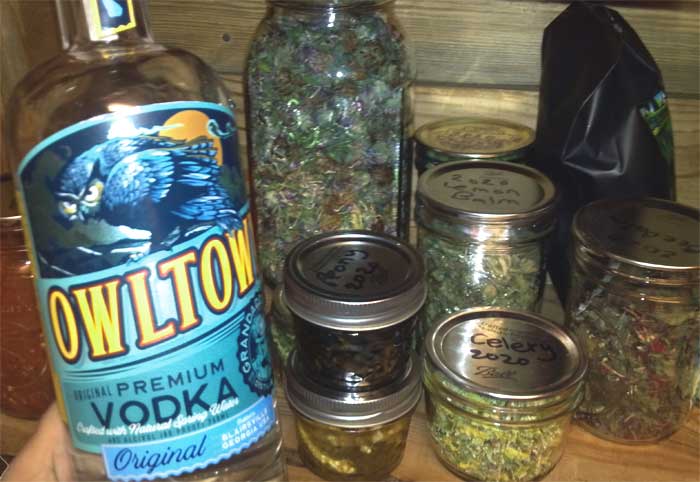
Making herbal products at home
Try making your own herbal products at home. For beginning herbalists, this is a great way to learn about herbal medicine.
After a while you will start to develop a relationship with the herbs you use. Let your body, mind and spirit guide you.
Soon you will know just what to choose when a health problem occurs.
Making herbal teas are the first step.
Herbal teas are easy. Add a tea bag to water, steep, and drink! Herbal teas are inexpensive. They really work, without harmful side effects. I have a whole post on making herbal teas, so visit that page to find tea directions and recipes.
Lots of herbal products
Move on to homemade extractions, tinctures, astringents, muscle rubs, lozenges, and other natural products as you gain experience. It is easy and fun to make herbal products at home!
Homemade remedies contain fresh, quality ingredients so they actually work to heal your body. Don't get discouraged with cheap products that are full of saw dust and cellulose fillers. Make your own herbal products and you will see much better results.
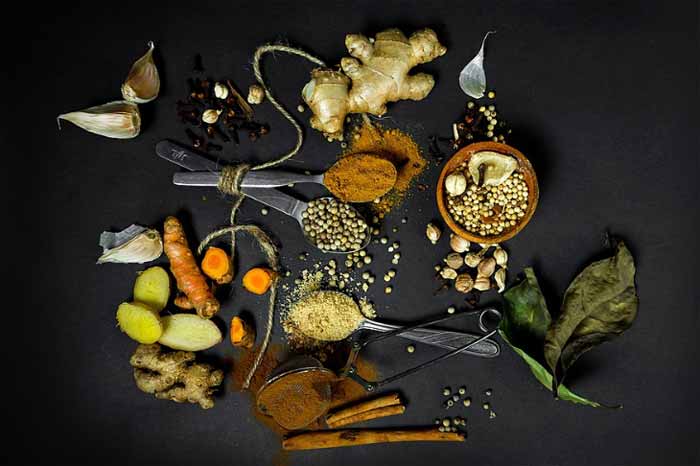
When making herbal products, start with quality plant material.
Herbal medicines can be made at home from medicinal leaves, twigs, bark, root, seeds, and flowers. Grow or harvest your own herbs if possible.
The most important thing is to have quality plant material. If you can't grow your own herbs, find a herb dealer that you trust.
Most herb dealers are honest folks and are not out to hurt or rob other people. Find reputable herb dealers at farm markets, produce stands, health food stores, and online.
We grow, harvest, dry, and sell some of our favorite Appalachian herbs in our online store. Look for herbal tea blend, yellowroot, and more.
Extracting beneficial properties from herbs
There are many ways to extract beneficial properties from herbs. The choice of which method to use depends on many factors.
- Make herbal tinctures for preserving plant properties for winter use.
- Use herbal compresses, poultices, and rubs for external applications.
- Make homemade herbal creams and ointments to protect the skin.
- Make herbal powders for adding to foods.
There are many accepted, time-proven ways to get healing herbs into the body, where they can work their wonders. From strong alcohol-based herbal tinctures to gentle herbal ointments, no one way is best.
It depends on the situation, what is available, and the desired result.
Nourish the skin
Use herbal ointments, creams, and lotions to nourish the skin. Herbal skin products contain vegetable oils like almond oil, fats like cocoa butter, and other beneficial herbs and essential oils that nourish, heal, and protect the skin resulting in a more glowing complexion.
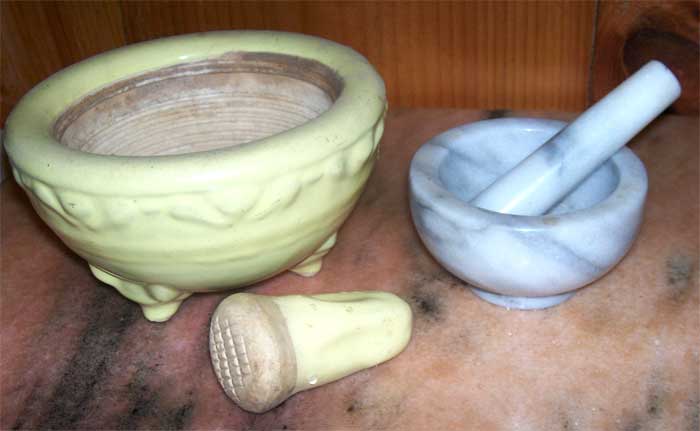
Ointment, lotion, or cream?
Herbal ointments, lotions, and creams are often used to moisturize the skin.
- Ointments contain oil and wax or butter and are used for everything from dry skin to diaper rash. Ointments can be thick and hard like lip balm, or a softer consistency like triple-antibiotic ointment that comes in a tube. Ointment will be soft like jelly, or harder like lipstick, depending on your ratio of wax to oil.
- Lotions are thinner and contain water instead of wax. They are used to cool, refresh, tone, and moisturize the skin.
- Creams usually contain oils, fats, and water with some type of emulsifier.
- Emulsifiers help water and oil to mix and stay together. Egg yolk can act as an emulsifier but it spoils quickly. Soy lecithin is a better choice for home use. Sometimes vinegar and witch hazel can work as emulsifiers, too.
Herbal ointments, creams, and lotions are easy, fun, and inexpensive to make at home with everyday kitchen equipment. Ointments, lotions, and creams can be used on most parts of the body (except the eyes) depending on ingredients.
Recipe for comfrey ointment
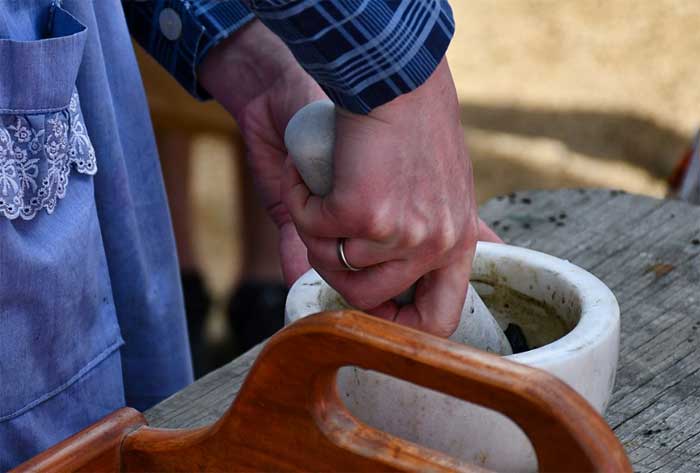
Herbal lotions
Herbal lotions are liquids prepared for external application and are usually used for protecting or healing the skin. They contain one or more herbs and a water or witch-hazel base.
The healing properties of lotions are absorbed directly into the skin. Lotions can become creams, ointments, or salves with the addition of waxes, fats, or starches to act as thickening agents.
Creams and lotions are like ointments but not as thick.
Creams and lotions have thinner consistency than ointments and salves since they do not contain wax or solid fats.
Water based mixtures are good for cooling and soothing irritated and inflamed skin. They usually require an emulsifier to help the water blend with the oil or fat.
Borax is easy to use and helps to bond fats with water (but extended use of products containing borax will dry out skin).
Lecithin is a natural emulsifier made from egg yolks and works well in some creams.
Easy herbal lotion recipe
One easy recipe for herbal skin lotion includes a tablespoon of rosewater, a cup of witch hazel, and a dropper of chickweed tincture. Apply with a cotton ball three times a day to improve the look of the skin.
A few drops of high quality essential oil may be added for extra strength.
Making herbal tinctures and extractions
Tinctures and herbal extractions are made by soaking fresh or dried plant material in vodka for a period of about two weeks.
The alcohol works to extract medicinal properties and preserve them for later use. Tinctures are quickly absorbed by the body and can be used internally and externally.
Non-alcoholic tinctures can be made using vegetable glycerin if desired. Both types of tinctures can be taken by mouth or used on the body. Never use rubbing alcohol to make tinctures.
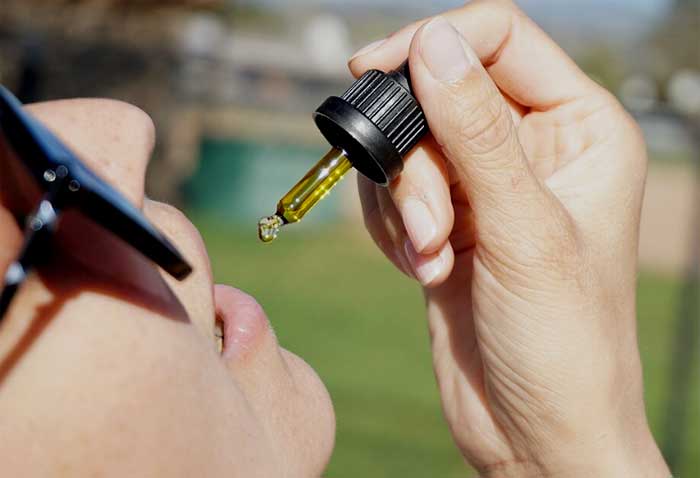
Making hertal tinctures at home
- Homemade tinctures (alcohol extractions) should be made from vodka or whiskey and herbal plant material.
- Different types of herbal tinctures can be blended later if desired but it is best to use one herb at a time in the beginning.
- To make a tincture, put herbal material in an appropriate sized jar and cover with vodka.
- Vodka may be diluted with a little water (four parts vodka to one part water) if desired.
- Seal jar tightly and place in a dark cabinet.
- Turn jar and shake gently every day to mix ingredients.
- Keep plant material underneath the liquid so that mold doesn't grow.
- After two weeks, strain liquid into a clean jar and discard solids.
- Store tincture in a clean, glass bottle or jar with a tight fitting lid.
- Tinctures keep longer when stored in a dark, cool environment like the refrigerator. If tinctures are properly stored they will last for years.
Alcohol should be removed when treating children.
When treating children with alcohol based tinctures, the alcohol can be removed by adding a small amount of almost boiling water to one dose of tincture. As it cools, most of the alcohol will evaporate.
Be careful when using heat around alcohol. Alcohol is flammable so don't get burned!
Use wine or vinegar instead of vodka in tinctures.
Herbal extractions can also be made with wine (including brandy and cognac) or even apple cider vinegar.
Both wine and vinegar make excellent medicines for digestive and circulatory problems. Wine and vinegar infusions are great for taking by the spoonful during the winter months because of their warming actions.
Many are also good in salad dressings, especially basil, rosemary, sage, and thyme.
Herbal tinctures work great as mouth sprays and under-the-tongue drops.
Tincture drops and herbal mouth sprays bypass the digestive system and deliver a more potent medicine to the system.
Sprays and under-the-tongue drops are especially useful in emergency situations. Also, small doses can be used repeatedly over a period of time to help regulate dosage.
Sprays and drops should be used in a clean mouth. Brush teeth, rinse well, and wait 10 minutes. Hold spray and drops in mouth for as long as possible before swallowing.
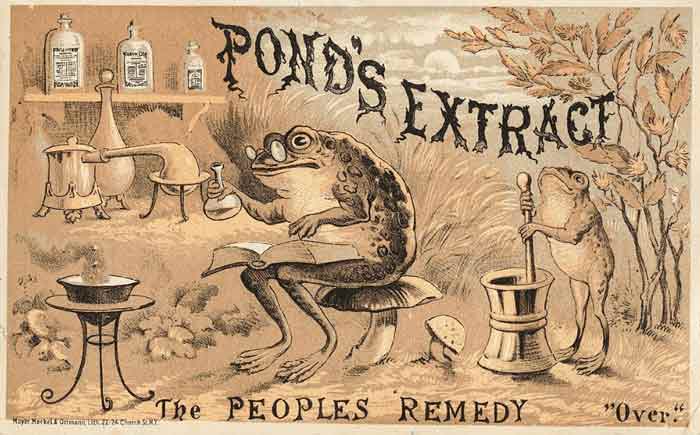
Certain blends of herbal tinctures can sooth a cough.
Try mixing fennel, licorice, mullein, and wild cherry bark tinctures with honey and a little fruit juice.
Take 1 teaspoon every hour. Mullein tincture really helps heal lung problems and congestion.
See Mullein for more information about mullein tinctures.
Tinctures may be used in massage and as skin washes.
Use tinctures on tired, aching muscles for fast relief. Tinctures may be added to washes for treating skin rashes, blemishes, and other irritations.
Herbal tinctures and extracts help heal the body.
Herbal tinctures and herbal extracts are pretty much the same thing. They both contain vodka, whiskey, or some other type of alcohol that is safe to consume.
Fresh herbs are soaked in the alcohol for several weeks until properties are extracted. The old plant material is strained out and the alcohol is stored for use as needed.
Tinctures are taken in small amounts by mouth or used in liniments for arthritis and muscle rubs.
Herbal tinctures can also be added to other home remedies. Tinctures are good for preserving fresh summer herbs for winter use.
Herbal properties in the tincture are preserved by the alcohol and may retain their potency for years. Vanilla flavoring, also known as vanilla extract, is an example of a tincture.
Tinctures are usually safe to take by mouth.
Herbal tinctures are taken internally for everything from coughs to nervous disorders, but not all tinctures should be taken by mouth or ingested!
Use common sense, do some research, and get to know your ingredients. Tinctures made from culinary herbs like rosemary can safely be taken internally. Tinctures made from some herbs like walnut hulls should be used internally with caution.

Liniments should NOT be taken internally.
Liniments are basically herbal extracts made with rubbing alcohol. They are good for rubbing on achy joints and sore muscles.
Any herbal product made with rubbing alcohol should NOT be used as a mouthwash or taken internally.
Herbal astringent using vodka and witch hazel
Astringents are good for the skin. They kill germs, close pores, remove excess oil, and make good aftershave lotion.
Herbal astringents are used externally. Use vodka extraction method to produce chamomile, bayberry bark, sage, nettle, yarrow, or mullein astringents.
One cup of extract mixed with one cup of witch hazel makes a good astringent. For additional tingle mix in a few drops of peppermint essential oil. Keep in a bottle, cap tightly, and shake gently before use. Use a cotton ball to apply to face or sprayer for use on body.
Making astringents with rubbing alcohol
Astringents can also be made out of rubbing alcohol but be sure to label it "Not for internal use".
Put fresh or dried plant material in a mixture of water and rubbing alcohol. Strain after one week.
Store the resulting liquid in a bottle with a tight fitting lid. Witch hazel and a favorite essential oil may be added if desired.
Shake well before using. Never take anything made with rubbing alcohol internally, I can't stress that enough.
Infused oils and massage
Some infused oils are fine for use as a food and in massage. Rosemary, thyme, and rose are suitable for both.
Some infused oils are not suitable for consumption but are wonderful in massage. Arnica flower infusions are great when used on tired, achy muscles but should never be taken internally.
Infused oils can also be used as a base for ointments and creams.
Making infused oils with herbs
Active plant ingredients can be extracted in oil instead of alcohol. There are two techniques, the hot oil method and the cold oil method.
The hot method is best for sturdy herbs like comfrey, rosemary, cayenne, seed pods, barks, and roots.
The cold method is suitable for fragile material like calendula flowers or rose petals.
The infused oil is used in massage oils, creams, lotions, ointments, and other herbal products.
Tightly-capped Infused herbal oils will last for a year if kept in a cool, dark location, although small amounts made fresh are more potent.
Herbal oils are sometimes used for culinary purposes like salad dressings. It depends on the ingredients.
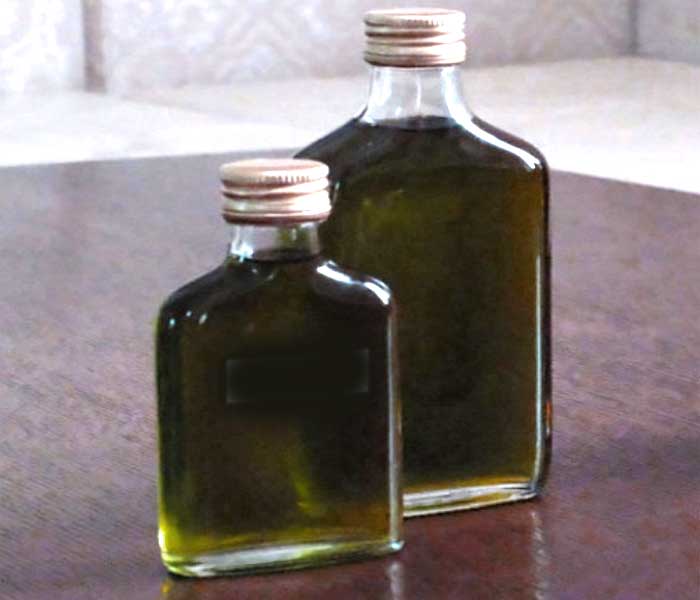
Cold oil extraction method
- To make infused oil with the cold method, pack a jar with herbs and cover completely with cold-pressed vegetable or nut oil.
- Cap tightly and let stand in a cool, dark place for two weeks.
- Shake gently every day.
- Strain through jelly bag, and repeat process for two more weeks with fresh plant material.
- Strain again and store.
Hot oil extraction method
- To make infused oil with the hot method, put 8 ounces of cold-pressed vegetable or nut oil (almond, walnut, olive, grape seed, or safflower are good) and a big handful of plant material in a double boiler and gently heat over simmering water for an hour or so.
- Oil should change color taking on the color of plant material.
- Strain through a jelly bag or double layer of cheesecloth.
- Store in a clean, airtight bottle or jar.
Making herbal ointments with oils
Ointments can be made with herbal oil extractions. Often essential oils are added for extra strength and potency.
I often add tea tree oil to my ointments since it helps keep them from going rancid or developing mold. Once herbal products go rancid or mold appears, they should be discarded.
Various infused oils are made into ointments by adding a thickening agent like beeswax or hard fat (100% cocoa butter is good). Coconut oil works, too.
Essential oils add extra strength. Try rosemary for muscle rub ointment, frankincense essential oil for arthritis ointment, and rose essential oil for chapped lips.
Herbal ointments and salves
Herbal ointments and salves offer greater protection than lotions. Containing waxes and butters, they are more resistant to water and act as a barrier to germs.
Ointments and salves are used to heal, soothe, and protect. Diaper rash ointment and eczema salves are examples.
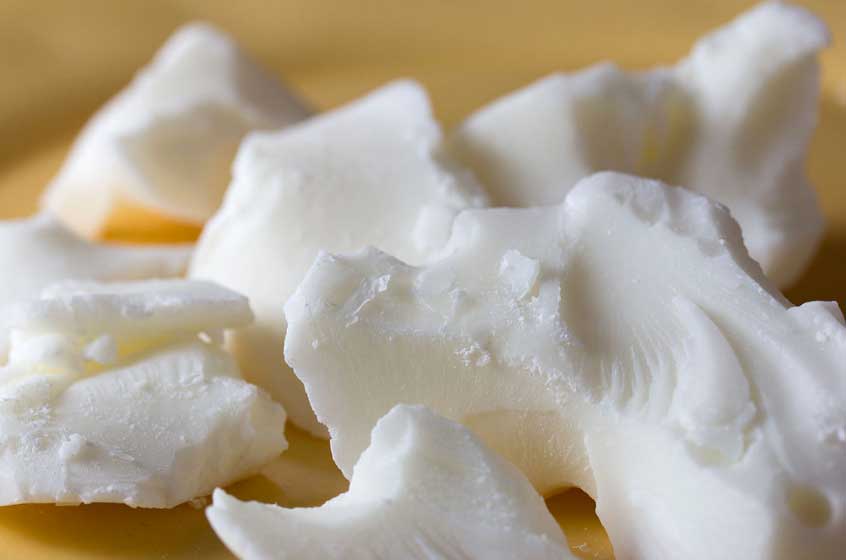
Ointments help heal dry skin.
Try a warming cocoa butter and lavender ointment on winter-weary feet.
- Prepare ointment by heating some cocoa butter in a small pan. When soft, stir in a few drops of lavender essential oil.
- Sit your ointment to the side while soaking your feet in warm vinegar water.
- Rinse and dry your feet completely, and then slather on your herbal ointment.
- Put on thick socks. It's like a little bit of heaven on earth.
Directions for making herbal ointments
- Put 4 ounces of infused oil into the double boiler, add a small piece of wax or cocoa butter (about a tablespoon), and stir until gently melted and completely mixed.
- Add up to 8 drops of essential oil if desired.
- Pour into a jelly jar or small tin while still warm.
- Cool before capping tightly. Mixture will thicken as it cools.
- If herbal ointment is too hard, use more oil or less wax next time. If it is too soft, use more wax.
Ointments can be made with herbal infused oils or with cooking oils. I like to use beeswax and a good cold-pressed oil such as almond, grape seed, walnut, safflower, or olive oil. It is easy to do!
Do not let it get so hot that the oil starts to smoke! Gentle heat is always best. Heat only until wax is melted.
Other ingredients such as lanolin or vitamin E may be added. Once everything is combined, pour into a container with tight fitting lid and place in the refrigerator to set.
Once cooled, the resulting solid will have the consistency of petroleum jelly or maybe a little firmer. The more wax that is added, the harder the resulting ointment will be.
Larger quantities of ointment can be made in a double boiler over boiling water. Add wax, oils, tinctures, and other ingredients then stir until blended. Remove from heat. Add essential oils once mixture starts to cool. Transfer to jars with tight fitting lids before ointment sets up.
Once you make a few ointments, you will see what works best for you.
Another ointment recipe
Herbal ointments are very useful and easy to make at home. Just melt beeswax with any cold pressed vegetable oil. I like grape seed oil, almond oil, olive oil, or walnut oil. Add essential oil while it can still be stirred into the mixture (the wax will thicken mixture as it cools). Dried and powdered plant material may also be added.
- Add powdered comfrey for rapid healing.
- Add powdered calendula petals to soothe itchy skin.
- Add powdered plantain for less scarring.
As mixture cools, it will become a solid like lip balm. You can also add infused herbal oils instead of the plant material depending on what is available. Experiment and see what works best for you.
Herbal products and shelf life
All herbal products made with natural ingredients will mold or grow rancid over time due to their lack of chemical preservatives. Tinctures, vitamins, and essential oils may be added to ointments and other herbal products to improve shelf life and to avoid spoilage.
- Add one drop of tincture of benzoin to guard against mold. Benzoin acts as a natural preservative.
- You can also add tea tree oil or the contents of a vitamin E gel cap to stop mold from forming.
- Refrigeration also deters mold growth.
- Never use moldy, rancid, or off smelling products.
Homemade ointments, creams, and lotions will last for only a couple of weeks at room temperature. All herbal products deteriorate faster than petroleum products whether natural preservatives are added or not.
Herbal preparations like lotions, creams, and ointments keep best in dark-colored glass jars or tins with tight lids.
Dried herbs keep well in paper sacks stored in a dry, ventilated attic.
Herbs need to be protected from dampness, high heat, and insects.
If herbal products become moldy or rancid, throw them away. Don't let herbal products go bad!
Use them up. Go ahead and treat yourself. Slather herbal lotions on sore muscles. Apply gobs of herbal ointment on dry feet and elbows. Use plenty of herbal cream after shaving and on wrinkles.
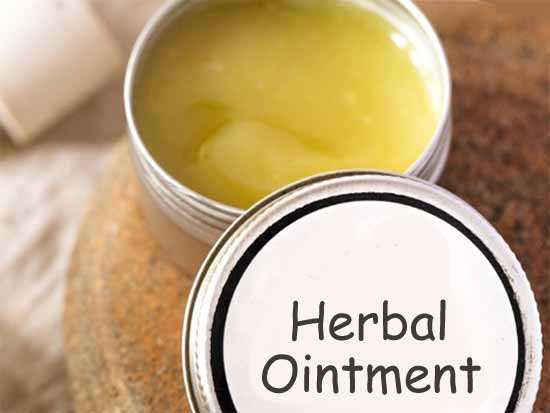
Other additions to herbal ointments and creams
When making ointments, lotions, and creams, use appropriate herbs or essential oils depending on condition to be treated.
- Try adding geranium essential oil, neroli essential oil, and frankincense essential oil to help promote new cell growth.
- Use lavender essential oil to speed healing in cases of abrasions.
- Add eucalyptus or tea tree essential oil for making herbal chest rubs that calm coughs and loosen phlegm.
- Add peppermint essential oil, eucalyptus essential oil, or wintergreen essential oil for chest congestion.
- Use ginger and fennel to stimulate circulation.
- Use rose essential oil for hormonal problems.
- Try rosemary essential oil and patchouli essential oil for arthritis pain.
- Use frankincense or myrrh oil for stubborn spider bites and infections.
- The list goes on and on.
Do not use a microwave when making herbal products.
Microwaves can destroy healing and nutritional properties of foods and herbs. If you can do without a microwave in the house, then do so. We got rid of ours years ago.
Making herbal poultices, compresses, and plasters for use in herbal medicine
Herbal poultices are made from fresh or dried herbs. The herbs are blended with oil, vinegar, or water into a paste.
Poultices are then applied directly to the affected area (or on top of a thin layer of cheesecloth), covered with a thicker cloth, and left in place for as long as possible (or up to four hours).
Poultices, plasters, and compresses may be taped to body or wrapped with gauze to stabilize. A thin layer or olive oil can be applied first to help keep herbs from sticking to skin.
Herbal plasters are made from powdered herbs.
In order to powder an herb, it must be really dry. If there is a hint of moisture, you might end up with a gummy paste. Go ahead and use the paste. It is still full of healing benefits.
To powder an herb, I love the ease of a coffee bean grinder or food processor. Sometimes I use a mortar and pestle. Sifting dry, crumbly leaves through a small screen can also work.
Herbal plasters are made by spreading a thin layer of honey or ointment on a clean cloth and adding powdered herbs. The plaster is then applied to the body.
Powdered herbs like ginger and mustard are good in plasters for treating lung and chest congestion.
Use comfrey plasters for skin abrasions.
Herbal plasters may be left in place for up to four hours. Check for irritation every hour especially when using ginger or mustard, which can burn.
Herbal compresses can relieve cysts and abscesses.
Make a compress by soaking a cotton cloth in strong, hot herbal tea and applying to affected area (but not so hot that it burns the skin). The heat enhances the healing activity and opens the pores for faster drainage and healing.
To stimulate circulation, alternate compresses with hot tea and cold water. This is also good for treating minor wounds.
Compresses are often used to treat headaches.
A cold herbal compress is used for headaches. For headache, use white willow bark, peppermint, or lavender in a strong decoction or infusion.
Use your "tea" to soak a cotton cloth. It can be hot or cold. Hold against temples, forehead, or back of neck until room temperature. Repeat if necessary.
Poultices can be made from the remains of herbal tea.
Use the pulpy plant material from a used tea bag or pot of loose tea as a poultice.
If treating a boil or skin rash, prepare a pot of chamomile tea. The tea will work from the inside and the poultice from the outside! Use a hot water bottle over the poultice to keep it warm.

Some conditions require hourly attention.
Sometime poultices, plasters, and compresses will need to be changed every hour. It depends on the condition being treated.
A nasty spider bite benefits from hourly applications of plantain poultices. As poison is drawn out, the material needs to be freshened up.
Results depend on absorption rates.
The effectiveness of a poultice, plaster, or compress is increased when skin is warm, especially after a sauna, hot bath, in high humidity, or with any rise in body temperature.
Skin is also more permeable if natural oils are removed due to washing with strong soap or detergents.
Certain areas of the body are more permeable than others and include the palms of the hands, the soles of the feet, and thin skinned areas such as the forehead, face, neck, shoulders, armpits, and scalp.
Herbal cough syrups for coughs and sore throats
Herbal syrups are sweet and often given to children. They contain honey, maple, molasses, or cane sugar and are made from herbal infusions and decoctions.
Syrups are excellent remedies for bronchitis, coughs, sore throats, and colds. Elderberries come to mind since we make a delicious and healing syrup from them every year.
It's easy to make herbal syrups.
Heat the strained infusion, decoction, or tea and add honey or sugar, stirring until well blended. The more honey or sugar that is used, the thicker the syrup will be.
Allow mixture to cool and store in a dark bottle. Seal with cork stopper (syrups can ferment and may explode if tightly capped).
Herbal lozenges for the mouth and throat
Herbal lozenges are good for mouth, sore throats, and upper respiratory problems.
- Soak a mucilaginous herb such as marshmallow or slippery elm in water for twenty-four hours.
- Stir occasionally.
- After twenty-four hours, heat to boiling.
- Cool, strain, and then beat the resulting liquid to obtain uniform consistency (like thin Jell-O).
- Mix with enough powdered herb (like mullein or comfrey) to form a paste and add sugar or stevia to taste.
- A few drops of essential oil like mint or clove may also be added.
- Roll out on a board covered with arrowroot powder (available at health food stores) or sugar to prevent sticking.
- Cut into shapes and leave exposed to the air until dry.
- Store the lozenges in airtight containers, and keep them in the refrigerator until needed.
For your homemade lozenges, try adding sage, elderberry, horehound, or lemon balm. Other suitable herbs for lozenges include fennel, angelica, licorice, bee balm, and eucalyptus.
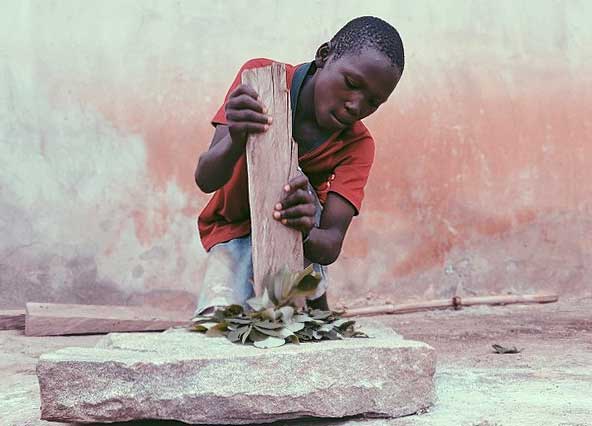
Herbal mouthwash
Herbalists tend to use herbs for all kinds of things. A good mouthwash can be made from a pint of strong peppermint tea.
Add anise, cloves, cinnamon, or rosemary for flavor and added benefits. Combine with a pint of sherry and a few drops of myrrh tincture for daily use.
Herbal powders and suppositories
Herbs can also be taken as powders. Empty capsules can be purchased just for this purpose.
Powders can also be added to juice or sprinkled on food.
Powders can be made into suppositories for treating rectal and vaginal problems. Suppositories sooth inflamed mucous membranes, speed healing, fight infection, and help reduce swollen tissue.
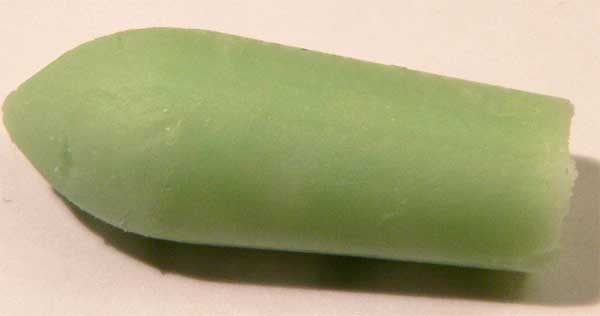
Suppositories are easy to make at home.
- Mix finely powdered herbs (like yellow dock, calendula, or chamomile) with enough cocoa butter to make a firm consistency.
- Roll into bullet shaped tubes about an inch long and place on waxed paper.
- Put in refrigerator to harden and remove one at a time for use.
- Allow to come to room temperature and insert at night while sleeping for best results.
Using herbal enemas and vaginal packs
Herbs may also be used in enemas and vaginal packs.
Use garlic for killing parasites, harmful bacteria, and viruses.
Use aloe vera to help heal inflamed tissue and for hemorrhoids.
Use catnip or dandelion for stomach and digestive diseases.
Use chlorophyll or fresh wheat grass juice to stimulate the liver and to help remove toxins.
Herbal muscle rub recipe
Use muscle rub on tired, aching muscles and as a massage oil. A good herbal muscle-rub recipe includes almond oil, rosemary essential oil, frankincense essential oil, and lavender essential oil.
This blend may also be used as a scalp treatment for dandruff and flaky skin.
Herbal moisturizers for the face
A basic white face-cream can be made at home with just four ingredients. This recipe makes a rich, luxurious herbal cream that can be used as a moisturizing facial or overnight cream.
- Melt a tablespoon of paraffin wax (or beeswax) with a quarter cup of almond or safflower oil.
- While hot, stir in a teaspoon of borax dissolved into a quarter cup of boiling water.
- Add a few drops of your favorite essential oil for extra benefits. My favorites for the face are rose, ylang-ylang, and frankincense essential oil. Carrot seed oil is also good for the skin. To find out more about essential oils, visit my aromatherapy page.
- Apply with small circular motions and leave on for an hour -- or overnight for the smoothest skin ever.
Please note that the above recipe makes a thick cream. You can also just use the almond oil and a drop or two of essential oil mixed together in the palm of your hand. Almond oil is a wonderful moisturizer and what could be easier than that?.
Other natural ingredients to add to your homemade products
Many ingredients can be added to homemade creams, ointments, and lotions.
- Use cocoa butter or coconut oil for protection against diaper rash and other irritants.
- Use tea tree oil for a longer shelf life.
- Add frankincense essential oil to heal irritated skin or sore muscles.
- Add ylang-ylang essential oil for exotic fragrance.
- Add the oil from a vitamin E capsule for extra healing power.
- Add powdered ginger for warmth especially in arthritis creams and foot rubs.
Herbal spritz
Lavender facial and body spritz is a great way to cool off during the summer months.
- Use a pint size spray bottle with fine misting nozzle (the finer the spray the better).
- Add a half teaspoon of lavender essential oil, a cup of aloe vera juice, and fill with distilled water.
- Shake gently, then spray on face throughout the day to hydrate, cleanse, refresh, and vitalize the skin.
- You can also use this spray as a room freshener.
Herbal shampoos and body washes
For an invigorating morning shower try adding mint essential oil, lavender essential oil, or orange essential oil to your favorite shampoos and body washes. Afterwards, gently pat skin dry and apply a vegetable or nut oil based moisturizer.
If you don't make your own herbal products, look for ingredients such as almond and grapeseed oil instead of mineral oil. Vegetable oils penetrate outer skin layers to heal and protect. Petroleum products just sit on top of the skin.
Use myrrh to heal gum disease.
Myrrh is a good investment. An excellent treatment for mouth and gum problems, it can be bought in powdered form and sprinkled on toothpaste right before brushing.
Myrrh is known to prevent and cure periodontal disease. Make your own myrrh toothpaste by combining a dab of coconut oil and a sprinkle of myrrh powder. Brush gently in circular motions taking care not to injure delicate gum tissue.
Making your own herbal beauty products
Make your own homemade herbal lotions, potions, tinctures, and teas! There are many ways that herbs can be used in our daily lives including potpourri, make-up, and household products.
Read about making herbal household cleaning products here.
*Never use rubbing alcohol in tinctures because it is toxic when taken internally. Rubbing alcohol is for external use only!
Ointments, creams, and lotions are for external use only. Do not take internally. Do not use herbal lotions, creams, or ointments on deep wounds.
Astringents prepared with ethyl alcohol are for external use only - do not take astringents internally. Do not apply astringents to deep wounds.
Always use common sense and discontinue use if irritation develops. Always treat herbs with respect. Use herbs only as needed and know when to stop.
Keep your healthcare professional informed.
Store herbs properly and discard if moldy or if they smell rancid.
Watch for possible allergic reactions.
Realize that essential oils are extremely concentrated and may be toxic in large amounts. Use essential oils only when diluted with carrier oils. Do not take essential oils internally.
Use special care with herbs like ginger and cayenne since they may cause burns on sensitive skin.
If considering using herbal remedies during pregnancy, consult with your physician first. Use lower doses for children. Do not treat children under 2 or the elderly with herbal remedies (even catnip and chamomile could cause an allergic reaction).
Remember that some herbs are photo-toxic and should not be used when outdoors or in sunlight.
Herbs work with other medicines to boost their potency so always consult with your healthcare provider before using any herbal remedy especially if pregnant, nursing, or taking other medicines.
Sources:
https://www.hopkinsmedicine.org/health/wellness-and-prevention/herbal-medicine
https://www.ncbi.nlm.nih.gov/pmc/articles/PMC3887317/
Blessings to you and yours!
Thanks so much for reading my blog. Jan.

*Note - the information on this website has not been evaluated by the Food and Drug Administration.
© 2005-2024 website design and content by Janice Boling